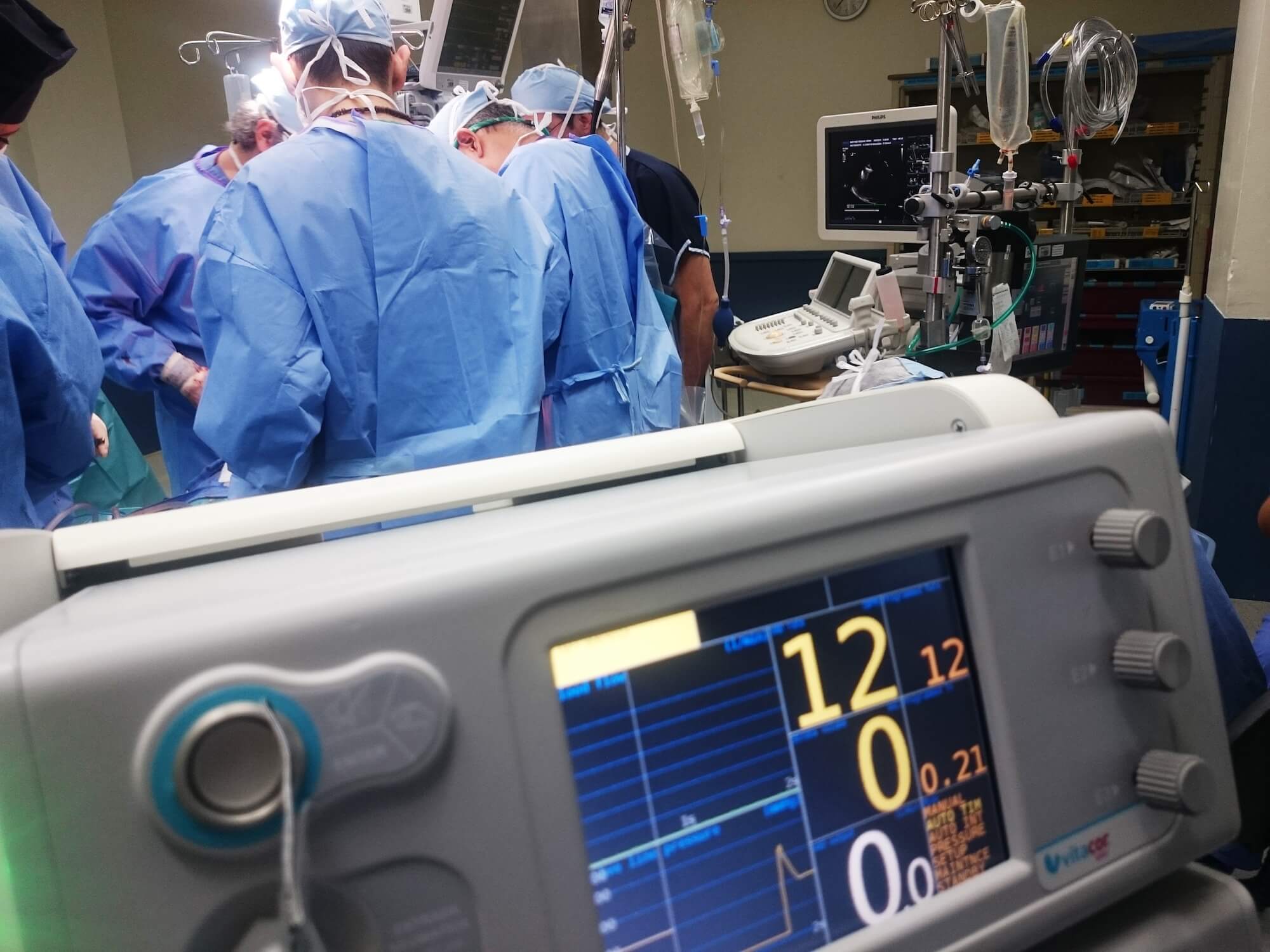Surgery To
Stop Snoring
When talking about "surgery to stop snoring", I get asked a lot of questions about laser treatment. Everybody seems to think that lasers can cure lots of medical problems these days, but this isn't true. However, for snoring, laser snoring treatment is probably one of the better options, depending on the exact cause of your snoring.
But first, let's take a look at why surgery IS NOT one of the best snoring solutions.
To be honest, most experts will say that surgery for snoring should only be considered after all the other non-surgical options have been tried out. You can read about these options at Snoring Home Remedies and also at Best Anti Snoring Device.
There are a number of things you can try out at home that will help you to snore less. If you can reduce your snoring without resorting to surgery, it will be the better option!
All stop snoring surgery operations have a relatively high level of complications, such as excessive bleeding and infection, and they all cause a relatively high level of pain and discomfort for 2 to 3 weeks following surgery. After all that, the success rate in reducing or eliminating snoring is not great.
 surgery for snoring
surgery for snoringRemember, there is no guarantee of success with surgery for snoring; even if it's successful at first, you may start snoring again after a few months. And you will have some pain for a while after surgery.
So BEFORE you consider stop snoring surgery, make sure you have gone through all the NON-SURGICAL options first!
Surgery To Stop Snoring - the options
The aim of any stop snoring surgery is to reduce or even remove excess or flabby soft tissues in the airway of the throat and soft palate. Basically, it's plastic surgery on your soft palate.
The simplest and probably commonest form of surgery is to deal with adenoids and tonsils in children, and sometimes selected adult patients. This removes excess swollen or inflamed tissues to open up the airways.
What other forms of surgery are there?
Uvulo palato pharyngo plasty. (UPPP). It's normally written as one long word, but I have split it into the 4 words that make it up; "Uvulo" refers to your uvula - that piece of soft pink tissue that hangs down at the back your throat. "Palato" refers to your palate, which your uvula is attached to. "Pharyngo" refers to your pharynx, which is basically your throat around your soft palate. And "plasty" is the medical word for changing the shape of something - it's the root of the phrase "plastic surgery".
There's NO PLASTIC involved!
It comes from the word "plasty". So, the UPPP procedure involves removing the uvula, removing part of the pharynx and soft palate, and sometimes the tonsils too. It's done under a general anaesthetic. Research shows that there is a high rate of complications, BUT it is the only procedure that actually WIDENS the airway, which is good if the snoring is caused by the SIDES of your throat falling inwards.
In this case, the success rate is very high, once everything has healed up. This can take 4 to 6 weeks, so it's not a "quick fix"!
Surgery To Stop Snoring
Laser-assisted uvulo plasty. (LAUP) This is the "laser snoring treatment" that people ask me about! It's done under local OR general anaesthetic. It's safer and less expensive than UPPP. Unfortunately, the pain afterwards is similar to UPPP, and is usually worst between 3 to 9 days after surgery. After 2 weeks it should be settled.
BUT HERE"S THE DISADVANTAGE -
LAUP surgery is rarely successful at the first session, and should normally be repeated several times - up to 4 times. As you can imagine, the post-operative pain tends to put patients off the subsequent sessions. The success rate is reported at around 50% after 2 years. In other words, 2 years after surgery, half of people who went through LAUP were snoring again. As you can see, laser snoring treatment is not quite the magic option that many people hope for.
CAPSO is a surgical technique using electro-cautery, to cut across the back of the soft palate and uvula, causing a fibrous healing. It's basically scar tissue. The advantage is that this fibrous tissue after surgery is less floppy than before, (ie. it's stiffer) hopefully eliminating snoring. Post-surgery pain is similar to UPPP and LAUP, but the procedure is simpler and tends to have fewer complications afterwards.
Because the electro-cautery seals the blood vessels as it cuts, there is little bleeding to start with, and the risk of excessive bleeding is very low. The risk of infection is also lower, as the electro-cautery sterilizes the soft tissue as it goes.
Surgery To Stop Snoring
Radio-frequency ablation(also called somnoplasty). There's that word again - "plasty". So this procedure changes the shape of something. It is a relatively NEW type of treatment, and causes much less pain afterwards than the 3 options above. The technique basically uses radio-frequency heating of small, targeted areas in the soft palate and pharynx, resulting in small areas of scar formation which causes shrinking of the area. By shrinking the tissues in the throat, the airway is opened up. As always, results are variable.
In about half of cases the improvement (the degree of reduction on snoring) is enough to say that the surgery has been successful. In the other half of cases, a second surgery is needed to get enough improvement.
As you can see, surgery to stop snoring really IS a treatment of last choice, AFTER you have tried all the non-surgical options listed in Snoring Home Remedies.
Even the widely-asked-about "laser snoring treatment" is not really any better than other "stop snoring surgery".
MY BEST RECOMMENDATION? I think you should go through the list of snoring home remedies, and try several of them; in combination, they can complement each other, ESPECIALLY when you add in the Best Anti Snoring Device. This mouth device really works well, and I think it's the best available at this time, for several reasons. Click on the link just above to read more about it!



